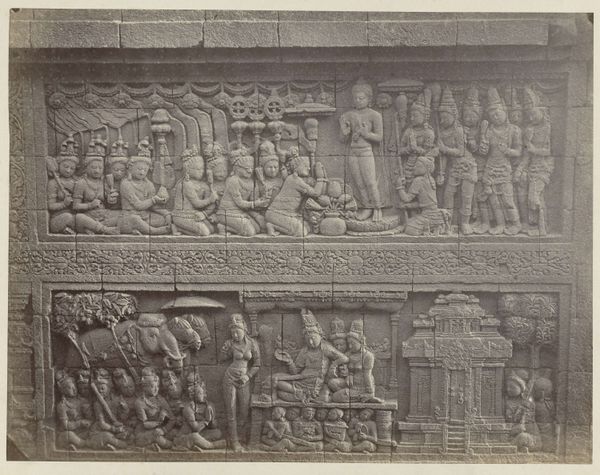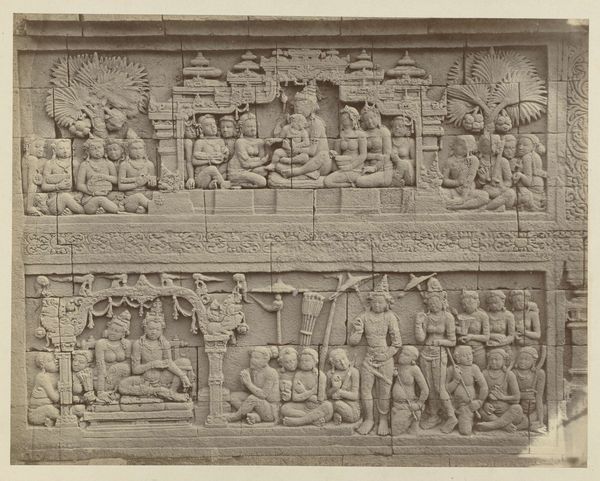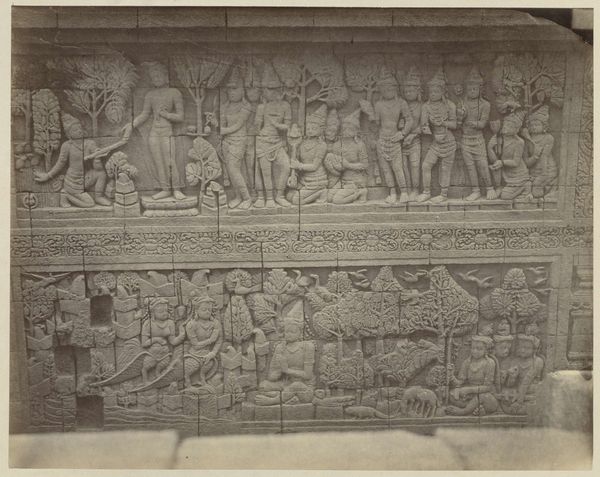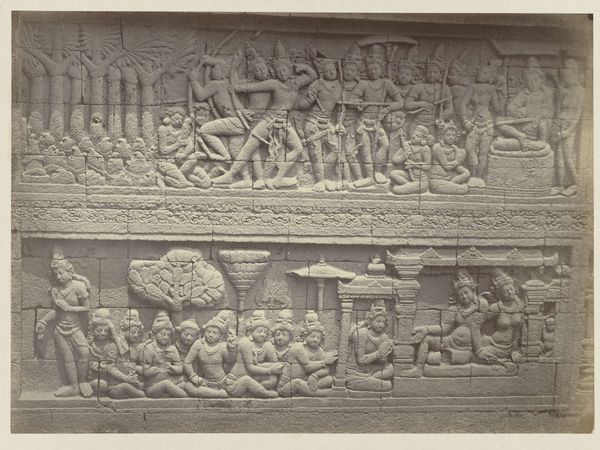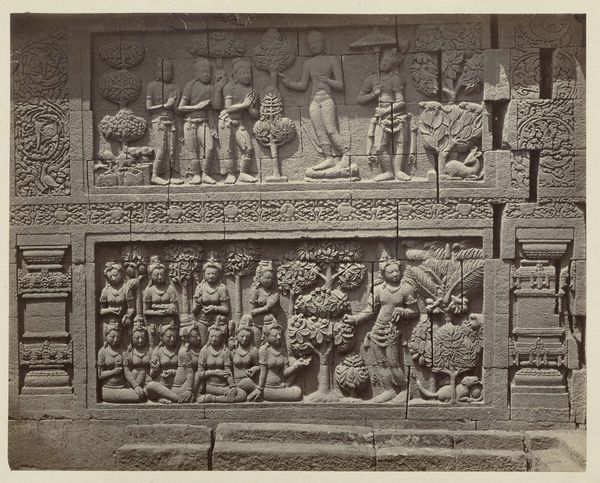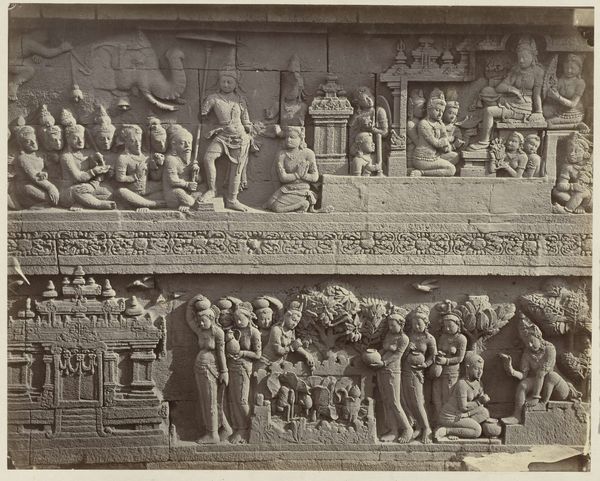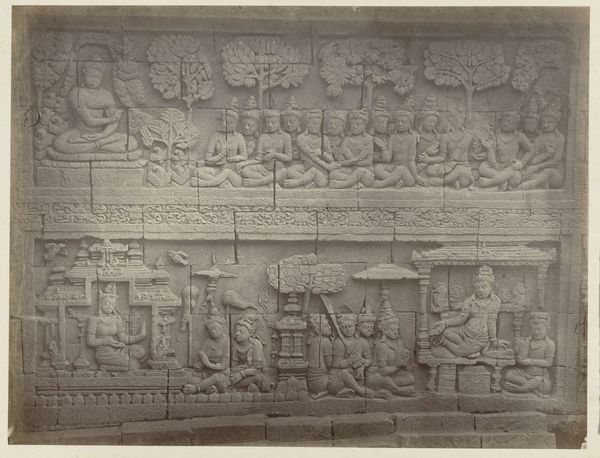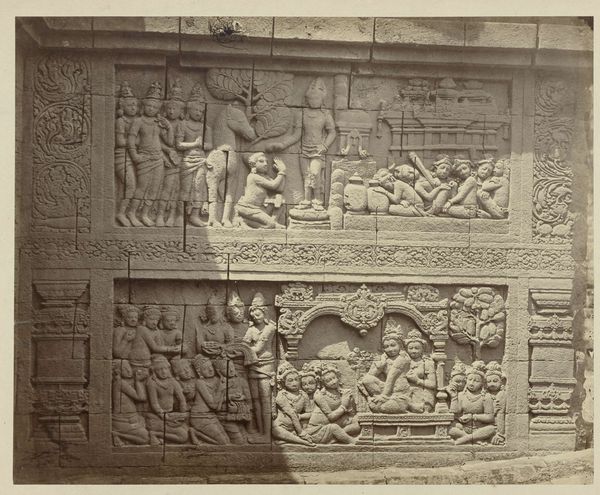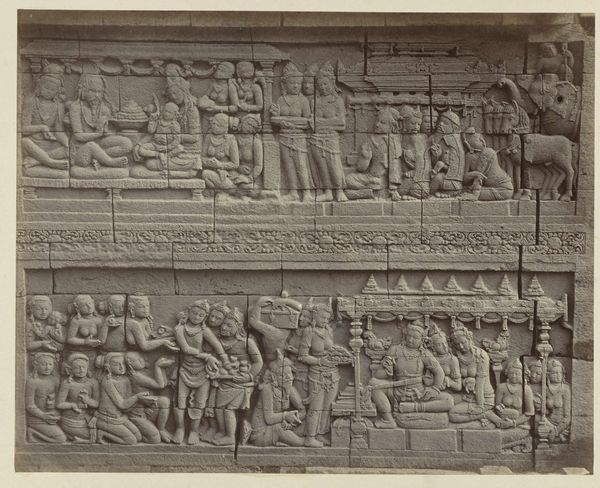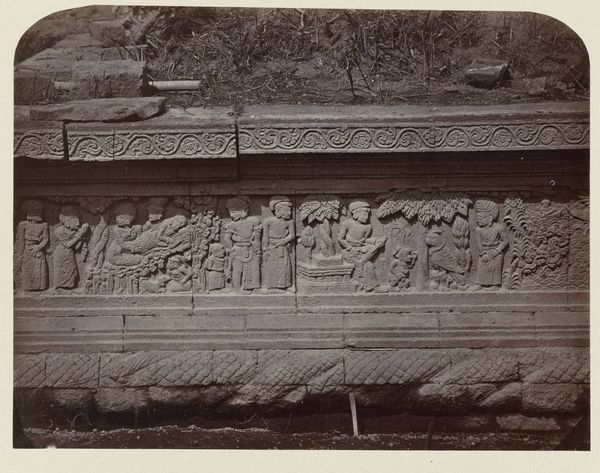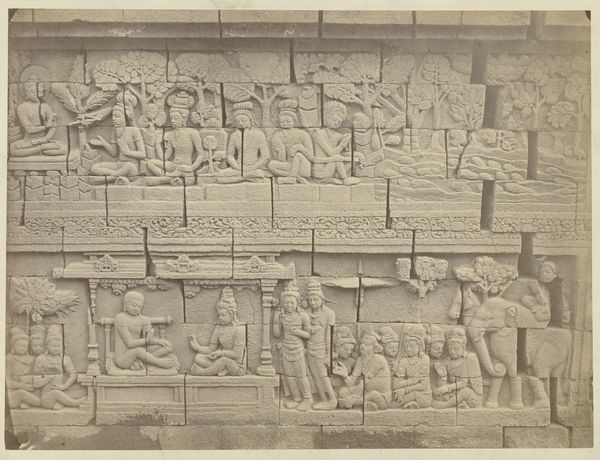
Basreliëf in de muur aan de oostzijde van de Borobudur Possibly 1873 - 1879
0:00
0:00
carving, print, relief, bronze, photography, gelatin-silver-print
#
portrait
#
photo of handprinted image
#
aged paper
#
toned paper
#
carving
#
narrative-art
#
muted colour palette
#
ink paper printed
# print
#
asian-art
#
relief
#
bronze
#
photography
#
nude colour palette
#
carved into stone
#
ancient-mediterranean
#
gelatin-silver-print
Dimensions: height 300 mm, width 400 mm
Copyright: Rijks Museum: Open Domain
Curator: What an amazing image. It exudes stillness, yet is filled with detailed scenes. Editor: Indeed. Let’s take a look at Isidore Kinsbergen's gelatin silver print, taken sometime between 1873 and 1879. It’s titled "Basrelief in de muur aan de oostzijde van de Borobudur"—"Bas-relief on the east wall of Borobudur." Borobudur, of course, is that massive 9th-century Buddhist temple in Java. Kinsbergen was a pioneering photographer working in the Dutch East Indies. Curator: The toning and aging of the print add so much. The limited palette focuses my eye on the figures themselves. You can see how the labor of carving influenced their representation, reducing human forms to simple shapes. Editor: Precisely. The compositions are striking. Kinsbergen really captures the repetition within the relief, mirroring poses and groupings. This formal mirroring produces a rhythmic and harmonious effect. It also highlights the underlying narrative structure that pervades all the details. Curator: Right. Understanding that process is so key. Kinsbergen was also a shrewd businessman; these prints provided visual access to the East Indies, contributing to colonial power and tourist interest. There's such a market for these things at that time. Editor: While you see access, I am interested in the aesthetic impact that it creates by observing how the lines direct our eye through scenes of both the material and the spiritual, arranged to highlight Buddhism, and perhaps more. Curator: It’s about production *and* reception, then. Who was able to afford these photographs? Where were they displayed? Understanding that historical context illuminates the photograph’s meaning just as much as the relief’s content. The consumption and value placed on images like these is a complex area for exploration. Editor: Absolutely. But the serene expressions captured and the monumentality implied create this sense of the infinite. You notice the narrative but I am focused on the form. Curator: It's interesting how viewing a simple photograph such as this brings to light these complex ideas on artistic work. Editor: Yes, the image’s capacity to hold different levels of visual meaning and context adds to the value of Kinsbergen's documentation of this beautiful location.
Comments
No comments
Be the first to comment and join the conversation on the ultimate creative platform.
